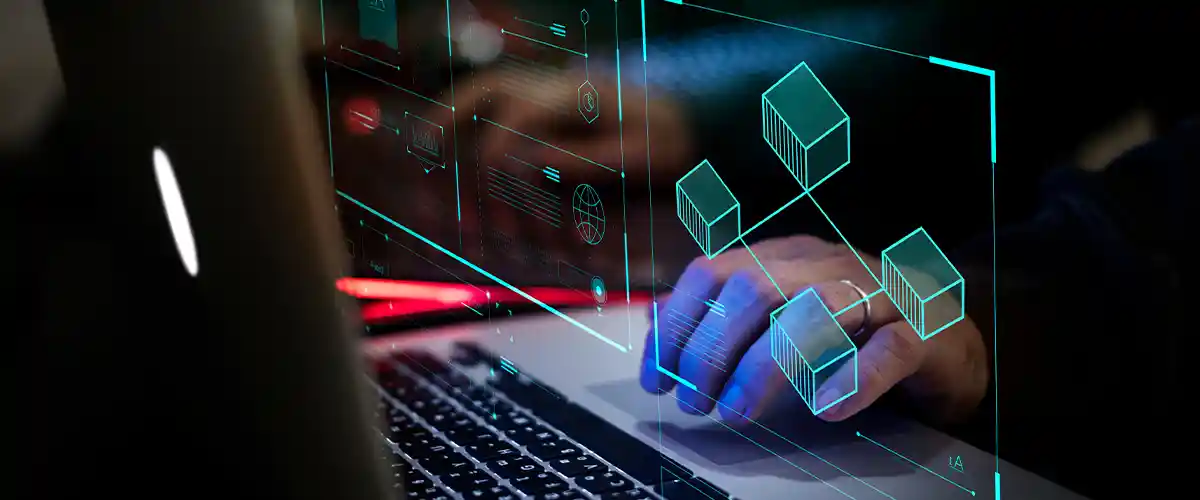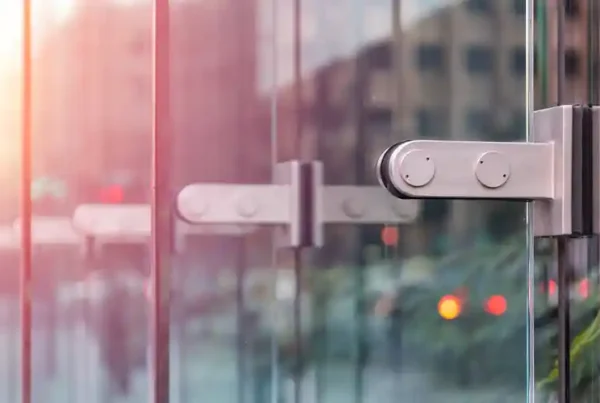
In today’s fast-paced and ever-evolving world, the significance of robust security services cannot be overstated. With the increasing complexity of threats, both physical and cyber, modern facilities require an advanced line of defence to protect their assets, data, and people. This has led to a paradigm shift in how security services are conceptualised, developed, and implemented. At the heart of this transformation are two pivotal technologies: Biometrics and Artificial Intelligence (AI). Together, they are redefining the landscape of modern security services, offering unprecedented levels of protection and real-time monitoring capabilities.
The Evolution of Security Services in the Digital Age
The digital age has heralded a transformative period for security services, steering them away from the reactive, after-the-fact measures of yesteryears to today’s forward-thinking, predictive paradigms. This shift is emblematic of an era where digital solutions have become the cornerstone of security strategies, enabling a more intelligent, efficient, and adaptive approach to safeguarding assets, data, and people. The introduction of sophisticated technologies has facilitated a departure from conventional methods, propelling the industry towards a landscape where security is not just a response but a preemptive measure woven into the very fabric of our digital existence.
This evolution has been characterised by the embracement of digitalisation, which has paved the way for the creation of smarter security solutions. These solutions are not static; they evolve, learn, and adapt, mirroring the dynamic threats they are designed to counter. The leap from physical locks to digital access and from passive surveillance to active, AI-driven monitoring epitomises the revolutionary change in how we conceptualise security. It underscores a fundamental shift towards integrating technology not merely as a tool but as an integral component of the security framework.
At the core of this evolution is the move towards not just mitigating risks but anticipating them, leveraging the prowess of artificial intelligence, biometrics, and digital surveillance technologies. These advancements enable real-time monitoring and immediate response capabilities, setting a new standard for what it means to be secure in the digital age. This proactive approach has reshaped the landscape, presenting a future where security services are not only about protection but also about resilience, adaptability, and foresight.
Biometric Access Control: The Key to Personalised Security
Biometric access control systems stand at the forefront of revolutionising how security is personalised and managed within modern facilities. By harnessing unique physical or behavioural characteristics—ranging from fingerprints and facial recognition to iris scans—these systems offer a highly secure and tailored approach to access management. Unlike traditional keys or access cards, which carry the risk of being lost, duplicated, or stolen, biometric identifiers are intrinsically linked to the individual, virtually eliminating such vulnerabilities.
The advancement of biometric technology has not only enhanced its accuracy but also its integration capabilities, allowing for a seamless blend with existing security frameworks. This technology ensures that access is granted solely to authorised personnel, thus elevating the security of sensitive areas within facilities to unprecedented levels. The application of biometrics in access control transcends mere entry and exit management. It extends into areas of time and attendance tracking, thereby offering an added layer of data integrity and compliance adherence.
The evolution of biometric systems is characterised by their increasing sophistication and ease of use, making them an indispensable component of contemporary security solutions. These systems can adapt to the unique requirements of any facility, providing a bespoke security solution that traditional methods simply cannot match. By deploying biometric access control, facilities can not only bolster their security posture but also enhance operational efficiency, as the management of access becomes more streamlined and automated.
As we continue to navigate through an era where security threats are becoming more intricate and unpredictable, the role of biometric access control as a key player in personalised security cannot be understated. Its ability to offer specific, secure, and smart access solutions positions it as an essential tool in the arsenal of modern security services, safeguarding not just physical spaces but the data and people within them.
AI-Powered Surveillance: Beyond the Watchful Eye
AI-powered surveillance systems represent a monumental shift in the realm of security monitoring, transcending the capabilities of conventional CCTV operations. These advanced systems are endowed with the ability to scrutinise vast swathes of video data with unparalleled precision, recognising potential threats and discrepancies with a remarkable degree of accuracy. What sets these systems apart is not just their observational prowess but their predictive intelligence. They possess the unique capacity to analyse and interpret behavioural patterns, thereby offering predictive insights that have the potential to preempt security breaches before they materialise.
This evolution in surveillance technology is indicative of a broader move towards proactive security measures. By harnessing the power of AI, surveillance systems can now anticipate potential security incidents, positioning security operations several steps ahead of potential threats. This forward-thinking approach not only enhances the security of facilities but also instils a sense of tranquillity among those who manage and frequent these spaces.
The brilliance of AI in surveillance is not merely in its ability to monitor and predict but in its adaptability. These systems can be tailored to the specific nuances of a facility, learning from daily operations to refine their predictive algorithms further. This bespoke adaptation ensures that security measures are not only robust but also exceptionally relevant to the unique challenges faced by different environments.
In embracing AI-powered surveillance, the landscape of security is undergoing a transformative change, shifting from a historically reactive stance to one that is emphatically proactive. This shift is not just about staying ahead of potential threats; it’s about redefining what it means to be secure in an increasingly digital world, where the lines between the physical and cyber realms are ever-blurring.
Integrating Technology for a Comprehensive Security Strategy
The fusion of biometrics and AI heralds a new epoch in the sphere of security, where the sum is indeed greater than its parts. When these potent technologies intertwine within a comprehensive security strategy, the resultant force is a nuanced, multi-faceted defence mechanism that transcends traditional paradigms. This synergy not only amplifies the efficacy of individual components but also engenders a security ecosystem that is resilient, dynamic, and inherently robust.
Incorporating biometric access control into the fabric of security measures personalises safeguarding protocols, ensuring that access is meticulously managed and inherently linked to the individual. On the other hand, AI-powered surveillance extends the gaze of security operations, imbuing them with the foresight to predict and mitigate potential threats before they can unfold. This proactive posture is essential in today’s digital landscape, where threats can emerge from the most unexpected quarters.
But the integration doesn’t halt at biometrics and AI. The inclusion of digital tools such as mobile access solutions and cloud-based platforms further enriches this ecosystem. These elements introduce an additional layer of flexibility and scalability, enabling security strategies to evolve in tandem with changing threats and technological advancements. The convergence of these technologies creates a security matrix that is not only comprehensive but also adaptable, capable of responding to the nuances of different environments and challenges.
The endeavour to weave together these technologies into a cohesive strategy is more than a mere aggregation of tools; it is about crafting a security narrative that is reflective of the complexity and interconnectedness of the modern world. It represents a holistic approach where every component works in concert, ensuring that the sanctity of facilities is preserved, not just from known threats but from those that lurk in the shadows of tomorrow.
The Future of Security Services: Trends to Watch
Peering into the horizon of security services, we stand on the cusp of innovations that are set to redefine our understanding and implementation of safety measures. Among these, the proliferation of Internet of Things (IoT) devices heralds a transformative wave, promising to imbue security systems with a level of interconnected intelligence previously unimagined. These devices, acting as sentinels, offer the potential for a more seamless and integrated approach to security, where information flows freely yet securely across platforms, enhancing the capacity for real-time response and monitoring.
Concurrently, the relentless advancement in machine learning and artificial intelligence algorithms is poised to augment the precision and efficiency of surveillance systems significantly. By refining the algorithms underpinning these systems, we inch closer to a future where predictive security becomes not just a possibility but a staple. This evolution will enable a leap from reactive security postures to proactive stances, where potential threats are identified and neutralised even before they fully manifest.
Another intriguing frontier is the burgeoning field of quantum computing. Its potential to revolutionise encryption and data protection heralds a future where security services could become virtually impenetrable. Quantum computing, with its promise of exponential increases in processing power, could redefine the landscape of cybersecurity, making current encryption methods obsolete and setting the stage for a new era of data protection.
These trends underscore a future where the synergy between technological innovation and security services not only strengthens our defence mechanisms but also reshapes the very fabric of what it means to be secure. As we navigate this unfolding future, the convergence of these technologies promises to forge a path towards security solutions that are not only more intelligent and interconnected but also more adept at predicting and mitigating the ever-evolving landscape of threats.
Overcoming Challenges and Embracing Opportunities
The march towards integrating biometrics and AI into our security fabric, whilst promising, throws up a constellation of challenges that must be navigated with care. The paramount concern of privacy looms large, as does the imperative for safeguarding data against breaches in an increasingly interconnected landscape. These concerns beckon for a robust dialogue between the creators of these technologies, those who legislate their use, and the entities that weave them into their security strategies.
Addressing these concerns head-on is pivotal. It involves crafting comprehensive regulatory frameworks that not only respect individual privacy but also ensure that the data these systems harvest and analyse is protected against unauthorised access. This requires a collaborative effort that spans industries and borders, fostering a culture of security that is both vigilant and adaptable.
Moreover, the journey towards a more secure future is not solely about mitigating risks. It’s equally about seizing the opportunities these advanced technologies afford. By engaging in open dialogues about the ethical use of biometrics and AI, we pave the way for innovations that respect our shared values. This, in turn, can catalyse a wider acceptance and trust in these technologies, unlocking their full potential to fortify our defences against the unpredictable threats of tomorrow.
The task at hand, therefore, is twofold: to diligently address the challenges that accompany the deployment of these technologies and to embrace the myriad opportunities they present for enhancing our security posture. By doing so, we can chart a course towards a future where security is not only about safeguarding the present but also about ensuring resilience and trust in the evolving digital landscape.
The Role of Professional Security Services
Navigating the complexities of contemporary security demands a nuanced understanding and application of cutting-edge technologies. This is where the expertise of professional security services becomes indispensable. Entrusted with the profound responsibility of integrating sophisticated systems such as biometrics and AI into seamless security strategies, these specialists stand at the vanguard of protecting modern facilities against an array of evolving threats.
Their role transcends the mere installation and maintenance of security apparatus. It encompasses a strategic dimension, where insight into the potential and pitfalls of emerging technologies informs the development of robust security frameworks. These professionals possess a deep understanding of the intricate interplay between different components of security systems, ensuring that each element functions optimally within the broader security ecosystem.
Moreover, their expertise is pivotal in customising security solutions to align with the unique demands and challenges of individual facilities. This bespoke approach guarantees not just the security but the efficiency and adaptability of operations, catering to the dynamic nature of threats in the digital age.
Professional security services also play a critical role in fostering a culture of security that prioritises privacy and data protection. They are at the forefront of implementing best practices and regulatory standards, ensuring that the deployment of advanced technologies upholds ethical considerations and societal norms.
In an era characterised by rapid technological advancement and complex security challenges, the guidance and proficiency provided by professional security services are more crucial than ever. They are the architects of the future of security, crafting strategies that safeguard not just our present but also lay a foundation of trust and resilience for the years to come.




